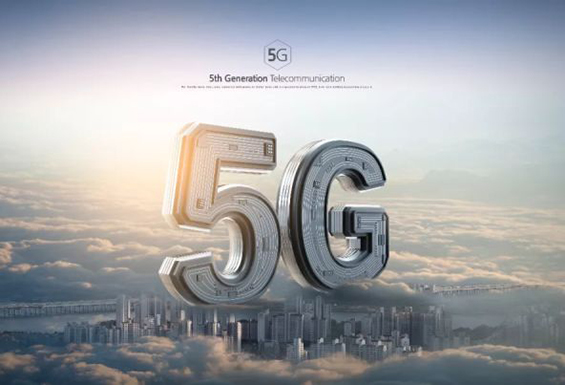When we couldn’t move the 4G network on the subway, we saw that the big wave media claimed that the 5G mobile phone was about to go on the market. Is there a lot of people who are as flustered as I am, is it that the mobile phone that 618 just bought has to be changed? Recently, I want to change it. Friends of the mobile phone are also asking if they want to wait and see.
At the World Mobile Conference, which was just concluded, mobile phone brand manufacturers have announced their own 5G product plans. Huawei said it will launch a 5G-supported Kirin chip and launch a 5G-enabled Huawei mobile phone in June 2019. OPPO and vivo also said that the first 5G smartphones will be launched in 2019. Equipment Qualcomm also announced that it will help Chinese mobile phone manufacturers to quickly release and launch 5G mobile phones.
According to reports, 5G core network technical requirements include: 5G new service architecture and cloud network based on edge and central data center, and develop 5G core network functions, network element functions and processes, and support deployment on virtualized infrastructure platforms. Control plane network element; network access control, registration and connection management, session management, QOS model, user plane management, etc.; edge calculation and network slicing; support switching from 5GC to EPC.

There are two test methods for 5G core network. One is to carry out standard conformity testing for 5G new architecture and functions, and the other is to introduce 5G traffic model to verify system performance based on NFV platform.
In the performance of 5G base station, under the influence of various factors such as channel fading and Doppler effect, the throughput performance of the 5G base station is accurately tested.
In the 5G field configuration performance, the external field networking environment, cell coverage, single-user throughput, single-cell throughput, network delay, multi-cell mobility, 5G NR and LTE interoperation, and uplink enhancement are tested.
In the digital distribution system, the previous passive distribution system is difficult to meet the 5G demand, and the digital distributed system will become one of the important means of 5G indoor coverage. The specification requirements for the digital distribution system include: 4T4R supporting MIMO, single-user downlink 4 stream uplink 2 streams, system bandwidth, subcarrier spacing, frame structure, modulation, coding and other systems are the same as macro base stations.
In the base station-SA revision, including the non-independent networking and the independent networking, the non-independent networking completes the physical layer and layer 2 specifications of the 5G NR, and the working frequency band, frame structure, subcarrier spacing, and high-order modulation. Further specification of channel coding, multi-antenna technology will support 64T64R, single-user 4-stream, multi-user 12-stream. The independent networking mainly improves the physical layer function and increases the control plane function. To improve the uplink coverage, the 5G base station can support the sharing of LTE FDD uplink spectrum resources.
The three major telecom operators also said that they are vigorously promoting 5G scale trials and application demonstrations, striving for scale trials this year, pre-commercialization in 2019, and commercial commercialization in 2020.
However, the meaning of 'official commercial use' is not what you think, just two examples:
In 2009, China Unicom announced the official commercialization of 3G.
In 2013, 4G officially announced commercial use.
'Official commercial use' is not a comprehensive coverage. How many people used 3G and 4G in the initial stage of commercial use, and where there is coverage signal, you will know when you think about it. Many people even felt that it was unnecessary when 3G rose 4G.
So how much more can you say that 5G will bring us in the early days?
Some people may say that you can't look at the development from a historical perspective, but I am sorry, but I still want to disappoint you. Even if the 5G signal coverage is fast, the initial impact on the mass users is limited, and it may be just fast.
And this fast, short-term 4G can already meet our needs, because the problems that both 5G and 4G want to solve are different.